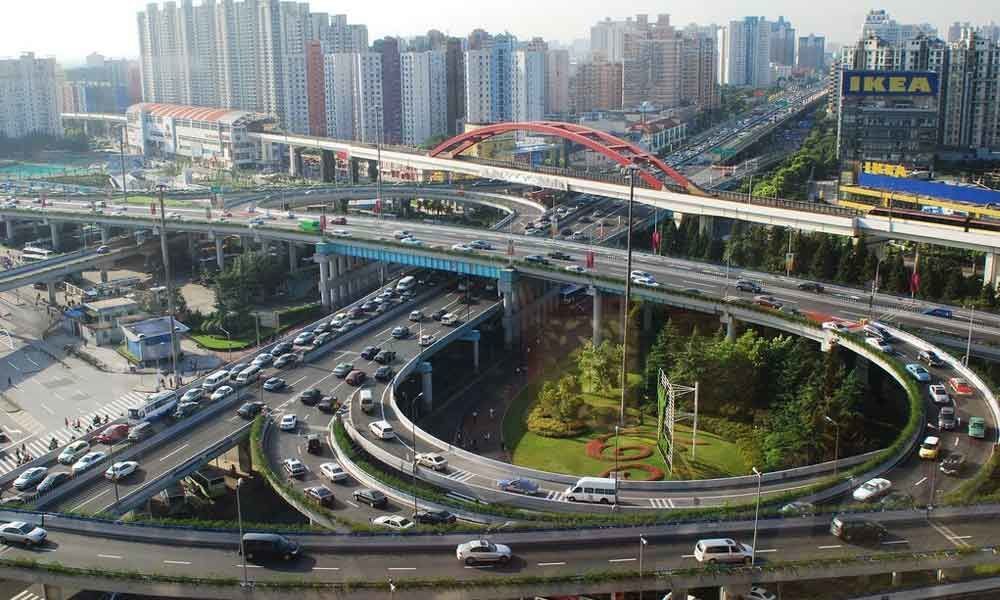Infra: The linchpin of India's real estate story

Along with the growth of realty, it is equally important to appreciate the role of infrastructure, as it provides the overall liveable environment and impacts the community in its day-today life.
Along with the growth of realty, it is equally important to appreciate the role of infrastructure, as it provides the overall liveable environment and impacts the community in its day-today life.
As like other sectors of the economy, real estate is dependent on infrastructure and it is easily influenced by its availability or lack of it, or by the quality of its construction.
However, the significant development that has taken place over the last few years is that infrastructure now looks at complimenting real estate to improve its viability and fund its growth.
Not only that – while parts of India are still waiting to be provided with basic infrastructure there are other parts of the country where aspiring Indian wants to see "infrastructure as a service" and wish to compare them with the best global standards and forms of service they see in the realty and hospitality sectors.
The growth in infrastructure sector has been a long and painstaking one. Historically, India has invariably had a lower focus on infrastructure leading to lower provisions in the Union Budget.
Post-independence, the initial focus was on creating power infrastructure and nothing significant happened on the infrastructure front for several decades.
The road sector has gained prominence since the year 2000, when the then government envisioned and developed the Golden Quadrilateral Corridor connecting Delhi–Mumbai–Chennai–Kolkata followed by the North–South and East–West corridors.
Around the same time, the telecom infrastructure also started to take ground with many private players creating telecom infrastructure – particularly the mobile telephony, which is now such an integral part of life and has assumed significant proportions (more than a billion Indians own a mobile phone).
The success of privatisation in road and telecom infrastructure soon moved into aviation, ports and then power from the early and mid-2000s till 2010.
From 2000–2010, the private sector increasingly started to invest in the creation and expansion of infrastructure. During this period, the private sector investment in infrastructure also increased to about 30 per cent of the total investment.
This rose to about 37 per cent–38 percent in the 12th Five-year Plan, however, as of 2018, it has reduced to about 25 per cent.
While the government spending in infrastructure has generally remained within 5 per cent – 6 per cent of GDP, most of it came through its own sources.
With the private and banking sector now struggling with over exposure and risks on PPP assets, the government is working towards creating an enabling environment and regulations for private sector investment in infrastructure.
While that is being developed, the government is also looking at alternate and efficient ways of generating funds to continue infrastructure investments.
While some of the funds came through cess, tolls and tariffs in usage of public infrastructure, the government is actively working to use/monetise land assets and corresponding real estate assets to source additional revenues and reduce fund requirements.
The non-farebox revenues are continuing to gain prominence with increasing share of revenues beingtargeted from it. The privatised Delhi and Mumbai airports, forming part of aviation infrastructure, now earn more from real estate and associated revenues (the non-aero or non-farebox revenues) than the aero revenues.
This is now increasingly being used across rail and metro projects. These include railway station redevelopment being undertaken by IRSDC and RLDA Multi-Functional Complexes.
For India to move from about a USD 2.5 trillion economy to USD 5 trillion economy by 2025, India needs to increase its growth in infrastructure. It is estimated that India needs about a $4.5 trillion investment in infrastructure by 2040, assuming India grows annually at a rate of about 5.5 per cent.
To achieve these, the government has embarked on several large programmes such as High-Speed Rail Projects (Bullet trains), 100 Smart Cities, Sagarmala, Bharatmala, Delhi Mumbai Industrial Corridor (DMIC)and other industrial corridors (CBIC, AKIC, BMIC, VCIC) etc.
These are expected to bring the required impetus in the economy – be it manufacturing, agriculture or services, and cater to the huge growth that India expects to realise over the next two decades.
Such infrastructure provisions will bolster the real estate market by opening not only, the serviced lands and market for real estate but also the private sector expertise in the services industry.
The industrial corridors programme is providing thousands of acres of serviced land in a 'Smart City' environment across India. This opens up opportunities for the private sector to provide professional city management services for such cities, which is lacking critically in a traditional municipal environment.
These can be extended to more than 100 townships owned by several PSUs like NTPC, SAIL, BHEL, NHPC, etc. including to the defence sector, which is looking at alternative ways to manage their residential townships and non-sensitive areas.
Investment opportunities in the infrastructure sector continue to grow and along with it the continuous development of realty.
(The author is the Executive Director, Govt & Infrastructure Advisory, Knight Frank India)
















